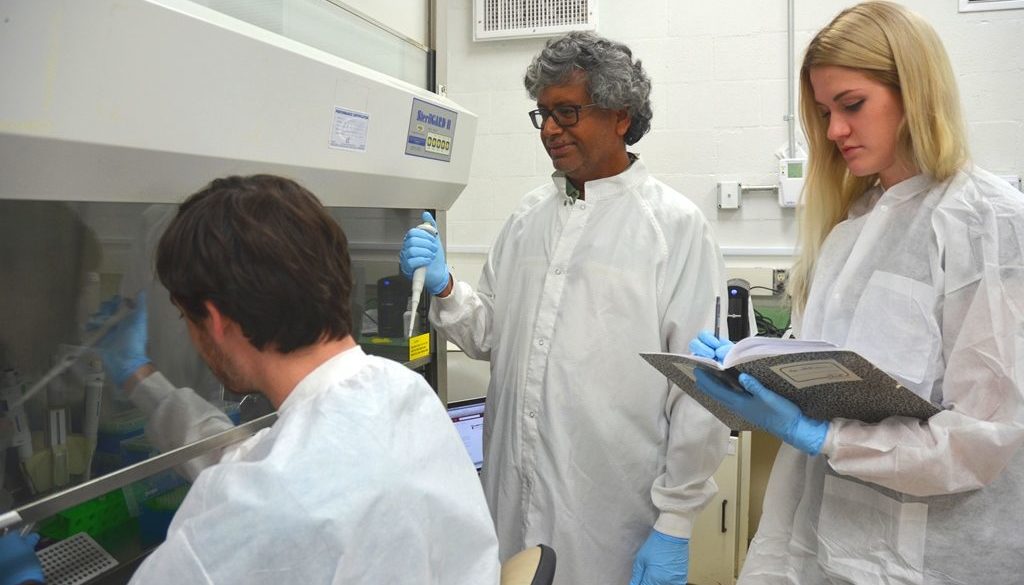Scientists Oppose Trump’s CPSC Nominee Nancy Beck
By Jenifer Sass, Natural Resources Defense Council
Over 90 scientists are opposing President Trump’s nominee, Nancy Beck, to become the next Chair of the Consumer Product Safety Commission (CPSC), because of her damaging policies that put consumers in harm’s way. Signers include former heads of federal agencies, high level government and academic scientists, authors of reports of the National Academy of Sciences, and others that have watched with dismay Nancy Beck’s career trajectory over years.
Nancy Beck may have some legitimate starting-point scientific credentials, but once she completed her academic training, she veered sharply from scientific consensus and best practices. Beck has used her career to protect the world’s largest corporate chemical manufacturers and polluters by weakening or blocking health protections for consumers, workers, and families.
Beck’s loyalty to the interests of corporate chemical polluters has led to a rewarding career, particularly under the current Trump Administration, where she went from working for the chemical trade association, the American Chemistry Council (ACC), directly to the Environmental Protection Agency (EPA). That is, Beck went from fighting environmental health protections on behalf of chemical polluters, to doing the same thing, but now within EPA and on the taxpayer’s dime.
In their letter, the scientists point out: “As one of her first acts at EPA, Beck refused to finalize the 2017 proposed ban on methylene chloride (MC) in paint strippers for consumer uses and most commercial uses. Four people died of MC asphyxiation between the time the ban was proposed and when EPA finally took partial, inadequate action. When Beck’s office did ultimately finalize the ban, after a two-year delay, it excluded commercial products, thus stripping worker protections.”
That is not Beck’s only demonstration of her callousness to workers. The TSCA chemical evaluations that Beck’s office issued presume that workers are protected with personal protective equipment (PPE) that is available, in good working condition, provided to all workers that need it, fitted properly, used consistently, and adequately protective in many situations of workplace exposure to chemicals. This false presumption is repeated in the evaluations of TCE, 1,4 dioxane, carbon tetrachloride and 1-bromopropane and others done under Beck’s command, despite being repeatedly admonished by EPA’s Scientific Advisory Committee on Chemicals (SACC), and by experts such as former OSHA Director Dr. David Michaels (who also signed the letter opposing Beck’s nomination).
The risk evaluations prepared under Beck’s leadership have also failed to consider the potential impacts of exposure to chemicals from drinking water, air pollution, and contaminated soil—justifying this exclusion by claiming that other environmental statutes address these exposure pathways. The Science Advisory Committee on Chemicals rejected this approach, saying it, “strayed from basic risk assessment principles by omitting well known exposure routes” (see EDF’s Richard Denison for details).
Also using her position at EPA to increase human suffering, Beck has implemented a TSCA systematic review method that includes the highly criticized exclusion of much of the epidemiologic studies of toxic chemicals linked to human diseases and deaths from chemical risk evaluations. The scientist’s letter points out that this is one of Beck’s long-standing positions, which she had advanced while still working for the chemical industry. Epidemiology studies are important because they provide the evidence of adverse health effects in people and are often the most valuable data for understanding the chronic effects of low-level exposures. Examples include the epidemiology studies linking prenatal exposures of lead, mercury, and pesticides like chlorpyrifos to long-lasting impairments in learning and behavior; these neurotoxic effects often go largely undetected in a rodent study but result in behavioral changes that make classroom learning difficult for a child. Under Nancy Beck, EPA blocked the cancellation of chlorpyrifos, the brain-damaging pesticide, in part by using the excuse that the epidemiology studies that proved harm in exposed children were unreliable.
Also under Beck, EPA failed to update its standards for lead paint and soil—contrary to decades of scientific evidence showing harm, and in violation of a federal court order—leaving the nation’s children at risk of lead poisoning. EPA’s updated lead dust standard also failed to meet the law’s requirements to protect children’s health.
At EPA, Beck had the authority to take numerous steps to gather additional information, inform the public and impose restrictions on the use of PFAS—highly toxic ‘forever chemicals’—but she did none of those things. When Congress stepped in to compel EPA to take protective actions, Beck continued to fight against those protections (see reports by UCS’s Genna Reed and by NRDC’s Daniel Rosenberg for details).
If confirmed as Chair of the Consumer Product Safety Commission, Beck can be counted on to rollback consumer protections now underway, such as on toxic flame-retardant chemicals in furniture and children’s products, and CPSC bans on certain phthalate chemicals in toys and other children’s products.
Federal Agencies like EPA and CPSC must rely on science to drive decisions, not polluters and their anti-science representatives like Nancy Beck. When nearly 100 scientists—including many that have worked with her—identify a fact-pattern of scientific misuse that compels them to speak out against a nominee, based on her miserable record of acting against health protective policies and practices, Congress should follow the facts.

